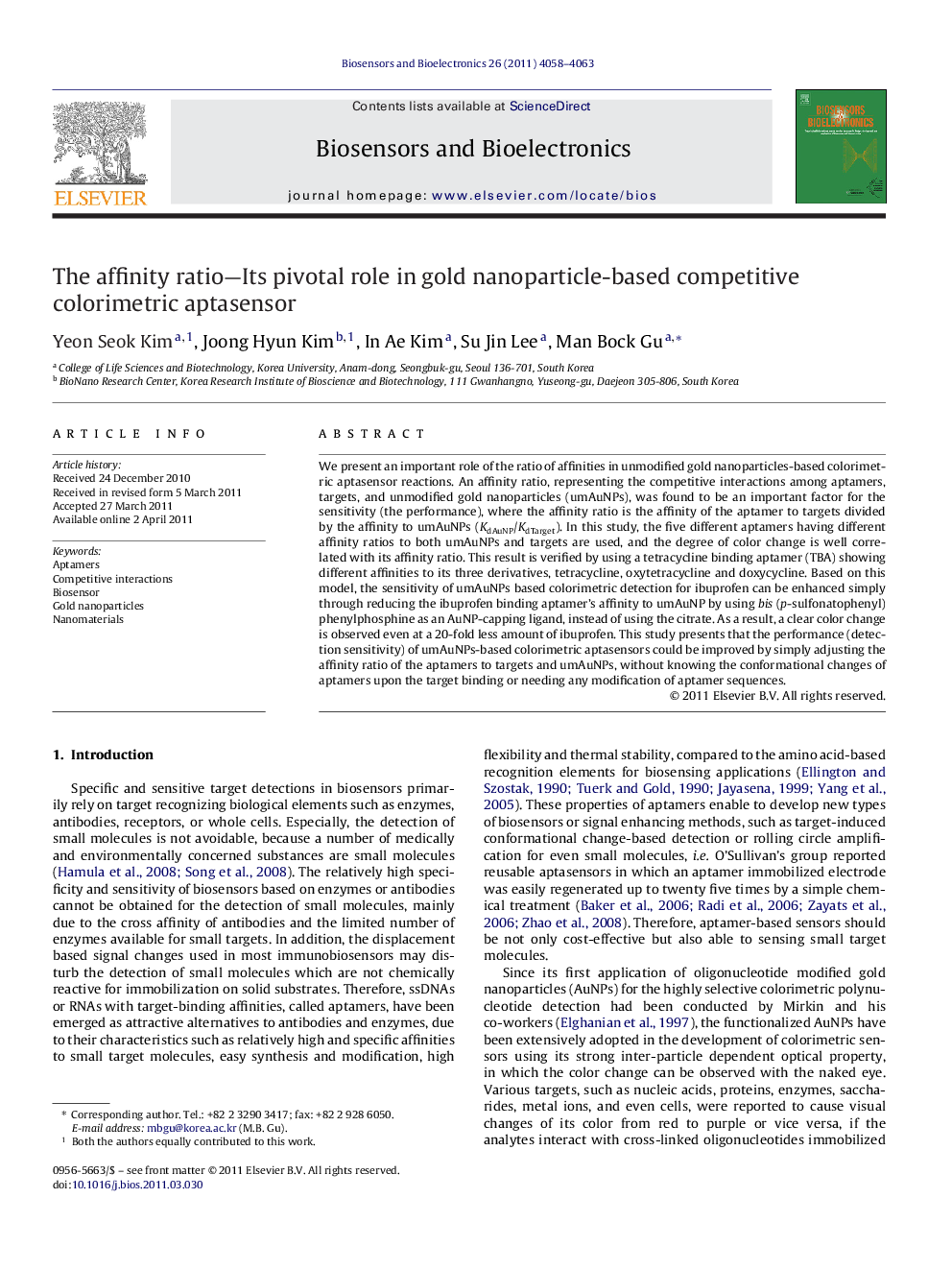| Article ID | Journal | Published Year | Pages | File Type |
|---|---|---|---|---|
| 868227 | Biosensors and Bioelectronics | 2011 | 6 Pages |
We present an important role of the ratio of affinities in unmodified gold nanoparticles-based colorimetric aptasensor reactions. An affinity ratio, representing the competitive interactions among aptamers, targets, and unmodified gold nanoparticles (umAuNPs), was found to be an important factor for the sensitivity (the performance), where the affinity ratio is the affinity of the aptamer to targets divided by the affinity to umAuNPs (KdAuNP/KdTarget). In this study, the five different aptamers having different affinity ratios to both umAuNPs and targets are used, and the degree of color change is well correlated with its affinity ratio. This result is verified by using a tetracycline binding aptamer (TBA) showing different affinities to its three derivatives, tetracycline, oxytetracycline and doxycycline. Based on this model, the sensitivity of umAuNPs based colorimetric detection for ibuprofen can be enhanced simply through reducing the ibuprofen binding aptamer's affinity to umAuNP by using bis (p-sulfonatophenyl) phenylphosphine as an AuNP-capping ligand, instead of using the citrate. As a result, a clear color change is observed even at a 20-fold less amount of ibuprofen. This study presents that the performance (detection sensitivity) of umAuNPs-based colorimetric aptasensors could be improved by simply adjusting the affinity ratio of the aptamers to targets and umAuNPs, without knowing the conformational changes of aptamers upon the target binding or needing any modification of aptamer sequences.
